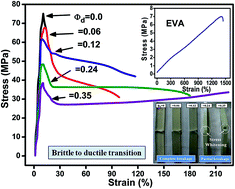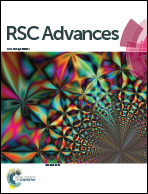Fabrication of super tough poly(lactic acid)/ethylene-co-vinyl-acetate blends via a melt recirculation approach: static-short term mechanical and morphological interpretation
Abstract
The mechanical properties such as tensile strength, tensile modulus, elongation-at-break and impact strength of poly(lactic acid) (PLA)/ethylene-co-vinyl-acetate copolymer (EVA, vinyl acetate content 50 weight percent) blends were evaluated at EVA volume fractions ranging from 0–0.35. The tensile properties were compared using several theoretical models. The blends lost little of their tensile strength and modulus while elongation-at-break was simultaneously enhanced. Efficient dispersion of EVA in PLA using a micro compounder in which there is provision for melt recirculation significantly improved the Izod impact strength making the blends super tough. The phase miscibility, two phase morphology, fibrillation and interparticle distance were studied using scanning electron microscopy (SEM). The blend is a two phase system where the particle size is enhanced upon an increase in the concentration of the blending copolymer. The normalized values of the relative elongation-at-break and Izod impact strength were enhanced significantly in accordance with the crystallinity, 33 fold (53.73 kJ mm−2) at a 0.35 volume fraction of EVA, which indicated softening of the system with enhanced toughness.


 Please wait while we load your content...
Please wait while we load your content...